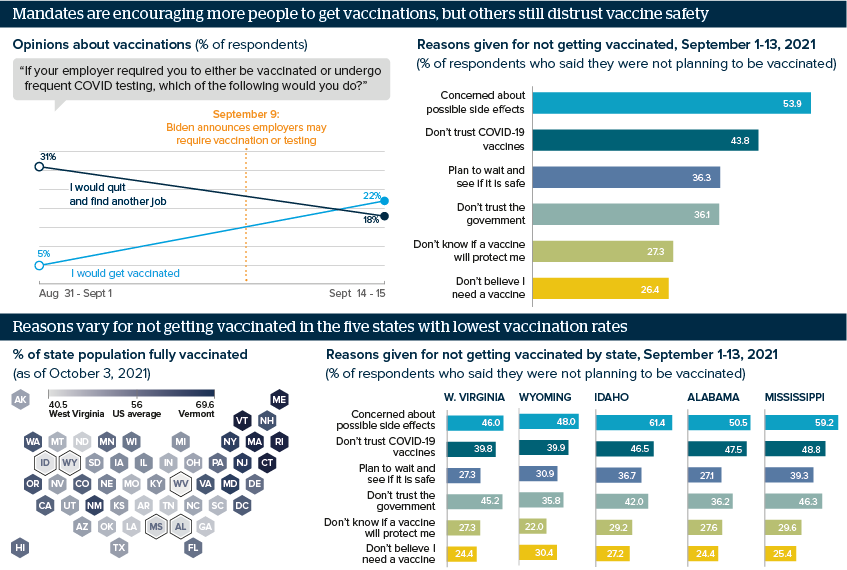Vaccine hesitancy rationales persist in United States
Federal vaccine mandates announced last month have reduced vaccine hesitancy, although many are still doubtful
Source: Census Bureau; IPSOS Mori; Centers for Disease Control
Outlook
US deaths from COVID-19 passed 700,000 on October 1, when 56% of the population was fully vaccinated. The Biden administration is hoping that federal vaccine mandates (requiring proof of vaccination or regular testing) announced last month, which may affect as many as 100 million workers, together with state and city requirements, will raise that figure.
Public opinion surveys indicate that mandates are indeed changing attitudes, and vaccination numbers are rising among workers affected by them. However, trust issues around the vaccine will continue to slow the pace of adoption in states where vaccination rates are already lagging, with continuing strain on hospital capacity.
Impacts
- Workplace vaccination requirements, possible now that the Pfizer and Moderna vaccines are fully FDA-approved, appear to be effective.
- High concern about side effects reflects some worry that getting vaccinated could lead to time away from work and so result in lost income.
- The Biden administration still has to overcome a distrust of government expressed by a third of those yet to choose vaccination.
- Health experts want to raise the pace of vaccinations before winter and US holiday gatherings create conditions for greater transmission.
